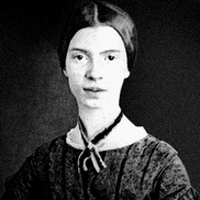Hope is the Thing with Feathers by Emily Dickinson: Summary and Analysis
Hope is the Thing with Feathers is written in 1891 by Emily Dickinson. The technique of concretizing abstract feelings is quite frequent in Emily Dickinson's poetry. But to a poet endowed with tragic sense, the theme of hope is quite unusual. This is one of the few poems where Emily strikes a note of hope. The poet calls a hope a thing with feathers (bird) that sits on the soul and keeps on singing a song of optimism.

Emily Dickinson (1830-1886)
The speaker in this poem calls hope as a bird “the thing with feathers” that sits in the soul of every human being. There, it sings in abstract tune a song of optimism. Its incessant melody inspires in man a sense of optimism. It goes on singing wordlessly and without any single pause. Hope sits on the soul like a constant companion. It is an abstract tune of optimism. Man never stops to hope. The sweetest song of hope is heard in the blow of sorrows, that is, the greater the troubles, the sweeter and more articulate our hope. Hope soothes and gives the warmth of comfort to many people. Such hope cannot be put out of countenance, unless by a sore storm. Men cease hoping only when they are in the sorest distress.
The introduction of the first person 'I' is remarkable. It changes the tone of the poem from objectivity to subjectivity. The poet now tells us that she had heard the song of hope in the chilliest land and on the strangest sea. Yet the bird of hope is so selfless that it never asks anything in return, not even a crumb. The poet has heard the song bird of hope in moments of greatest distress not only in her own life, but in others' lives as well. Hope is selfless. It comforts all when they need the comfort most. But it never expects of them anything in return.
Hope is the Thing with Feathers is written in an iambic trimeter that often expands to include a fourth stress at the end of the line. It is her hallmark to use long dashes and pauses to indicate breaks and rhythmic flow in the poem.
Dickinson uses homiletic style, which is derived from Psalms and religious book, to introduce her metaphorical description of Hope as a bird. She presents her metaphor in the first two lines; ‘Hope’ is the thing with feathers— / That perches in the soul. Then she tells what the bird does, how it reacts to hardship, where it can be found, and what it asks for itself.
Cite this Page!
Shrestha, Roma. "Hope is the Thing with Feathers by Emily Dickinson: Summary and Analysis." BachelorandMaster, 3 Dec. 2017, bachelorandmaster.com/britishandamericanpoetry/hope-is-the-thing-with-feathers-summary-analysis.html.
Related Topics
Much Madness is Divinest Sense: Analysis
Renunciation: Summary and Analysis
Because I could not Stop for Death: Analysis
I Heard a Fly Buzz: Summary and Analysis
After Great Pain, a Formal Feeling Comes: Analysis
Success is Counted Sweetest: Summary and Analysis
I taste a liquor never brewed: Summary and Analysis
A Bird came down the Walk: Summary and Analysis
I like to see it lap the Miles: Summary and Analysis
I had something that I called mine: Analysis
If I should Die: Summary and Analysis
I'm Nobody! Who are you?: Summary and Analysis
These are the days when the Birds come back
What Inn is this: Summary and Analysis
Exultation is the going: Summary and Analysis
Of Bronze-and Blaze: Summary and Analysis
A Clock Stopped: Summary and Analysis
I felt a Funeral, in my Brain: Summary and Analysis
Safe in their Alabaster Chambers: Analysis
There's a certain Slant of light: Summary and Analysis
To fight aloud, is very brave: Summary and Analysis
I like a look of Agony: Summary and Analysis
Bring me the sunset in a cup: Summary and Analysis
The day came slow-till Five o'clock: Analysis
 |
bachelorandmaster.com |